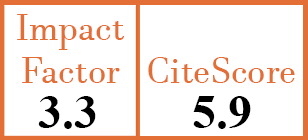Full Papers
Serum NLRC3 levels in systemic lupus erythematosus: correlation with clinical characteristics
W. Li1, X. Gu2, S. Liu3, C. Chen4, X. He5, B. Huang6
- Department of Rheumatology and Immunology, Meizhou People’s Hospital (Huangtang Hospital), Meizhou, China. ligen0072008@163.com
- Clinical Core Laboratory, Meizhou People’s Hospital (Huangtang Hospital), Meizhou; and Guangdong Provincial Key Laboratory of Precision Medicine and Clinical Translational Research of Hakka Population, Meizhou, China.
- Clinical Core Laboratory, Meizhou People’s Hospital (Huangtang Hospital), Meizhou; and Guangdong Provincial Key Laboratory of Precision Medicine and Clinical Translational Research of Hakka Population, Meizhou, China.
- Department of Rheumatology and Immunology, Meizhou People’s Hospital (Huangtang Hospital), Meizhou, China.
- Department of Rheumatology and Immunology, Meizhou People’s Hospital (Huangtang Hospital), Meizhou; and Meizhou Clinical Institute of Shantou University Medical College, Meizhou, China.
- Department of Rheumatology and Immunology, Meizhou People’s Hospital (Huangtang Hospital), Meizhou; and Meizhou Clinical Institute of Shantou University Medical College, Meizhou, China.
CER18779
Full Papers
PMID: 41042708 [PubMed]
Received: 31/03/2025
Accepted : 10/09/2025
In Press: 02/10/2025
Abstract
OBJECTIVES:
The role of nucleotide oligomerisation domain (NOD)-like receptor with a caspase activation and recruitment domain 3 (NLRC3) in systemic lupus erythematosus (SLE) remains unclear. This study aims to investigate serum NLRC3 levels and their correlations with disease characteristics in SLE.
METHODS:
This cross-sectional study included 60 newly diagnosed active SLE patients hospitalised at Meizhou People’s Hospital between January 2023 and May 2024. An additional 60 SLE patients in the lupus low disease activity state (LLDAS) and 50 healthy controls (HCs) served as control groups. Clinical data were extracted from electronic medical records. Spearman correlation was used to investigate the relationships between NLRC3 and clinical characteristics. Receiver operating characteristic (ROC) curve analysis was used to evaluate the diagnostic performance of NLRC3.
RESULTS:
Serum NLRC3 levels in active SLE patients were lower than those in LLDAS SLE patients (p=0.014) and HCs (p=0.004), while no notable difference was observed between LLDAS SLE patients and HCs (p=0.631). Active SLE patients with fever, rash, or haematological involvement showed significantly lower NLRC3 levels (p=0.029 for fever; p=0.034 for rash, and p=0.032 for haematological involvement). NLRC3 levels were negatively correlated with fever, rash, leukopenia, and serum BAFF levels (p=0.028; p=0.033; p=0.028 and p=0.017, respectively); positively linked to complement C3 (p=0.044). ROC analysis showed an AUC of 0.665 (p=0.003) for discriminating active SLE from LLDAS SLE.
CONCLUSIONS:
Serum NLRC3 levels are significantly reduced in active SLE patients and are associated with clinical disease activity parameters. NLRC3 could be a promising biomarker for active SLE identification.


